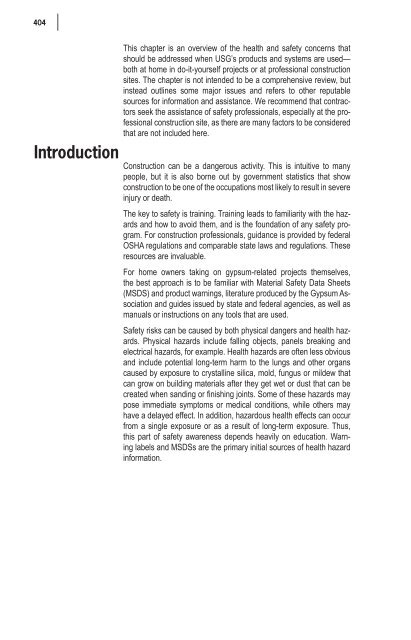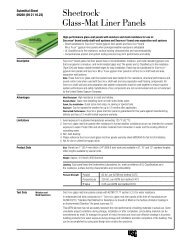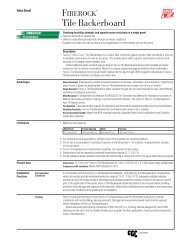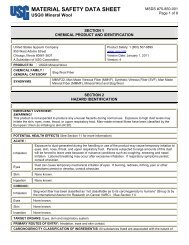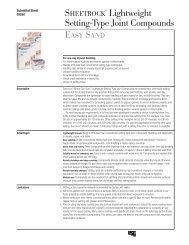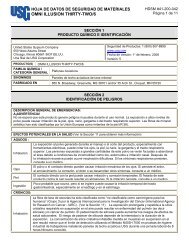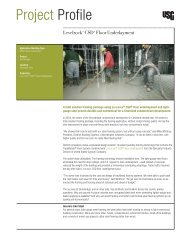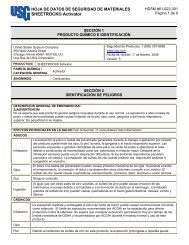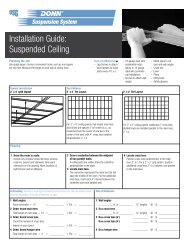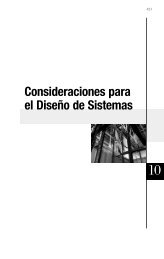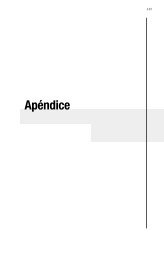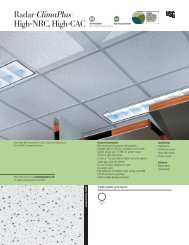13 Safety Considerations & Material Handling - USG Corporation
13 Safety Considerations & Material Handling - USG Corporation
13 Safety Considerations & Material Handling - USG Corporation
You also want an ePaper? Increase the reach of your titles
YUMPU automatically turns print PDFs into web optimized ePapers that Google loves.
404 |<br />
This chapter is an overview of the health and safety concerns that<br />
should be addressed when <strong>USG</strong>’s products and systems are used—<br />
both at home in do-it-yourself projects or at professional construction<br />
sites. The chapter is not intended to be a comprehensive review, but<br />
instead outlines some major issues and refers to other reputable<br />
sources for information and assistance. We recommend that contractors<br />
seek the assistance of safety professionals, especially at the professional<br />
construction site, as there are many factors to be considered<br />
that are not included here.<br />
Introduction Construction can be a dangerous activity. This is intuitive to many<br />
people, but it is also borne out by government statistics that show<br />
construction to be one of the occupations most likely to result in severe<br />
injury or death.<br />
The key to safety is training. Training leads to familiarity with the hazards<br />
and how to avoid them, and is the foundation of any safety program.<br />
For construction professionals, guidance is provided by federal<br />
OSHA regulations and comparable state laws and regulations. These<br />
resources are invaluable.<br />
For home owners taking on gypsum-related projects themselves,<br />
the best approach is to be familiar with <strong>Material</strong> <strong>Safety</strong> Data Sheets<br />
(MSDS) and product warnings, literature produced by the Gypsum Association<br />
and guides issued by state and federal agencies, as well as<br />
manuals or instructions on any tools that are used.<br />
<strong>Safety</strong> risks can be caused by both physical dangers and health hazards.<br />
Physical hazards include falling objects, panels breaking and<br />
electrical hazards, for example. Health hazards are often less obvious<br />
and include potential long-term harm to the lungs and other organs<br />
caused by exposure to crystalline silica, mold, fungus or mildew that<br />
can grow on building materials after they get wet or dust that can be<br />
created when sanding or finishing joints. Some of these hazards may<br />
pose immediate symptoms or medical conditions, while others may<br />
have a delayed effect. In addition, hazardous health effects can occur<br />
from a single exposure or as a result of long-term exposure. Thus,<br />
this part of safety awareness depends heavily on education. Warning<br />
labels and MSDSs are the primary initial sources of health hazard<br />
information.<br />
chapter<strong>13</strong>.indd 404 1/<strong>13</strong>/2009 10:36:30 AM


